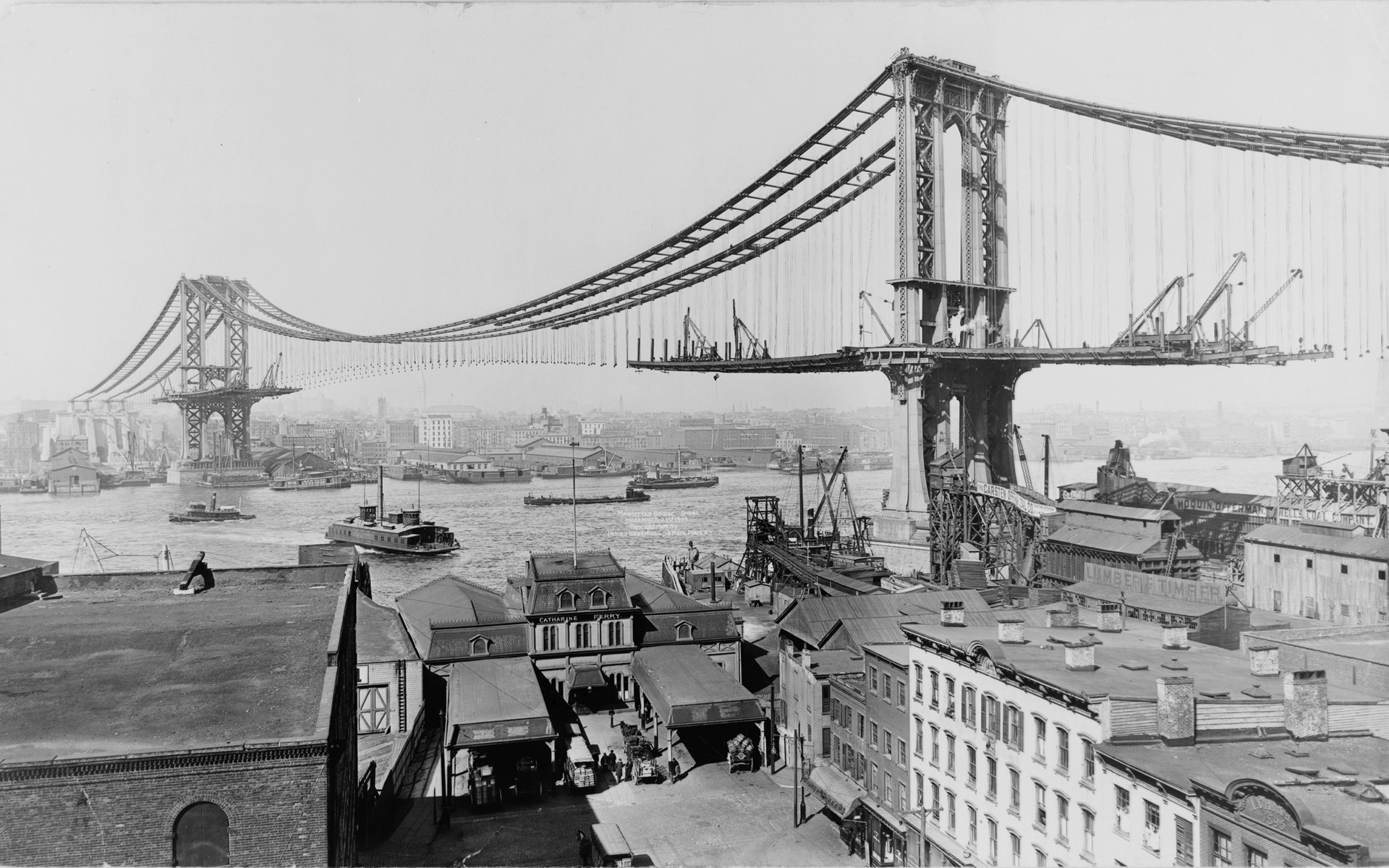US HISTORY RESEARCH: URBANIZATION
Sean Davis
The Brooklyn Bridge
Known as the eighth wonder of the world, the Brooklyn Bridge is a significant icon and symbol of the late 19th century's innovation and progress. It was perhaps the greatest engineering feat of its time, it was unlike anything Americans had ever seen before. The bridge connects New York and Brooklyn over the East River. Cities were developing new techniques of road and bridge designs. The completion of the Brooklyn Bridge was one of the great technological marvels of the 1800s, a dramatic steel-cable suspension span designed by John A. Roebling.| Map of Brooklyn Bridge connecting Manhattan and Brooklyn |
In 1870, the population of New York was 1.5 million people, about one tenth of the Brooklyn Population commuted to New York and back for their work. Before the creation of the Bridge, linking the two of the most central parts of NY, people used ferry boats to traverse. This form of transportation took an extremely long time as well as a very uncertain chance of working, ice in the water would often delay or interrupt travel.
/cdn.vox-cdn.com/uploads/chorus_image/image/53600397/14241442102_f7b11d4f39_o.0.jpg) |
| Brooklyn Bridge at sunrise on Brooklyn side |
 |
| Initial Construction of the Brooklyn Bridge |
 |
| Brooklyn Bridge at Mid-Point in Construction |
The Bridge was finished on May 24th, 1883. The opening of the Brooklyn Bridge is an event of National importance, as the idea of the bridge was long deemed impossible. Yet it was accomplished after 14 years of industrious labor. The Bridge was one of the first roadway bridges in the US at a length of 5,989 ft and 275ft above the water. Its Granite towers and steel cables offered a safe and scenic passage to millions of commuters and tourists during the age of Urbanization truly making it the 8th wonder of the world.
 |
| Walking Path on the Brooklyn Bridge |
Sources:
1. “Brooklyn Bridge” - ABC CLIO
-Article from ABC Clio, defined general basis for the need of the Brooklyn Bridge
2. Historic American Newspapers (16 June 1883)
-News Report the Day the Brooklyn Bridge became open to the public
3. CH 18 American History: A Survey p. 508
-Talks about Urban Growth and how people commute through the bridge (1800s)
4. “Brooklyn Bridge.” - History
-Important Facts and Information on the Brooklyn Bridge
5. “Brooklyn Bridge (1883)”
-Information on Bridges generalized
6. PBS “The Brooklyn Bridge.” by Ken Burns
-PBS information on the Brooklyn Bridge (Mr. Raiford showed this to me)
7. “How Do They Do It?” - Brooklyn Bridge.
-Modern Marvels Video (Mr. Raiford showed this to me)

Comments
Post a Comment